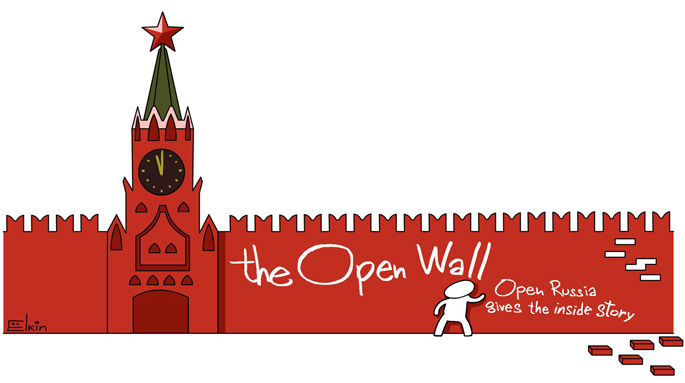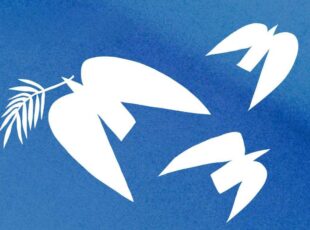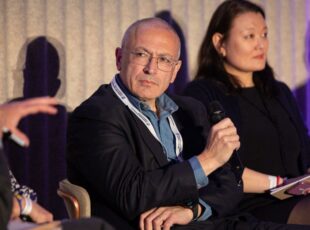Hooligan patriots
Hooligan patriots
The pro-Kremlin hooligans seem to be everywhere, attacking the “liberals and traitors.” But what does it really mean to be a Russian patriot?

At the “Island of the 90s” festival in Yekaterinburg the hooligan patriots showed up at the press conference held by Yevgeny Roizman, the city’s mayor, and interrogated the elderly people on the platform, calling them “liberals and traitors” (from their point of view, one and the same). They didn’t even leave when Roizman addressed them through the microphone, asking if they were imbeciles or cynics.The question remained unanswered, but anyone interested can draw his own conclusions.
Just a few days after that fracas, the same people were to be found near the House of Cinema in Moscow, attacking schoolchildren and 73-year old Lyudmila Ulitskaya, one of Russia’s best-known writers. She had come to congratulate the children, who were the winners in a historical essay competition, and had arrived in Moscow from towns and villages all over Russia. The trip to Moscow was, indeed, their main prize.
On that same day they attacked the opposition politician Alexei Navalny, having previously poured strong-smelling liquid over him and pelted him with cake. Then there is the constant vandalising of the Boris Nemtsov memorial on the bridge, where people are still putting flowers – a Sisyphean task. They trashed an exhibition of modern art. They mount attacks on gay men. They stalk and harass “unpatriotic” journalists and actors, sometimes even ordinary bloggers.
Their weapons are condoms full of dirt, syringes full of green paint, and rotten eggs. You might say, they are no worse than hardcore football fans (who, in fact, are probably better armed). But, as Navalny wrote after the most recent of their attacks on him, the more you have, the more you want. Tomorrow they may be using acid, bats and, who knows, perhaps even pistols.
All these extreme right-wing movements such as the National Liberation Movement, the SERB Liberation Movement, and many others, started appearing in 2012, when the new presidential administration (where Volodin had taken over responsibility for domestic policy from Surkov), closed down the grandiose Nashi [Rn. Ours!] project and everything connected with it. The independent press had called them “Nashists” [a mixture of Nazi and Fascist]. But they were not like the disciplined Blackshirts marching around; they were more a crude mixture of unprincipled self-seekers, freeloaders, and ordinary schoolchildren or students who were herded in like cattle.
The hooligans who have replaced them are more motivated, with fewer connections to the government. They seem to operate in a grey zone very close to the Kremlin; this bathes them in an invisible radiance, protecting them from the police and the courts, so that proving anything against them is well nigh impossible.
Putin’s press secretary Peskov described the attack on Ulitskaya and the schoolchildren as disgraceful and – note where he laid the emphasis – a disgrace to the Ribbon of St George. This ribbon appeared first in 2005, an initiative suggested not by ordinary people, but by the official student unions and the state news agency. The intention was that it should symbolise our memory of the war and our national pride in the veterans who fought in it, not unlike the British poppy. So, although both organisations are connected with the government in one way or another, it was not an order from on high.
It is not the ribbon’s significance that has changed, but the perception of it. De Saussure would start talking here about the signified and the signifier. After the second Maidan and the annexation of Crimea, it was people with St George’s Ribbons on their military fatigues who started firing live rounds in the Donetsk and Luhansk regions. They (and then the state TV channels in Russia) were convinced that they were fighting Fascism – because the new Ukrainian government was, apparently, fascist – though they looked more like the bandits and militants the Russian army itself had been fighting in Chechnya ten years previously.
Thereafter, it was almost impossible for the active minority – the middle class and the intelligentsia – who were against the war in Ukraine and other foolhardy foreign policy decisions, to wear the Ribbon of St George in the way it was originally intended. Because by doing so, one would seem to be supporting what was going on in eastern Ukraine. Another level of meaning had been added.
In this sense, there is little point in Press Secretary Peskov expressing surprise, because it is actually logical, that all these extreme right-wing hooligans, with green paint and rotten eggs, call themselves patriots, and wear the Ribbon of St George, which now stands for militarism, imperial complexes and hatred.
But this has nothing to do with the word “patriot.” All these small-time troublemakers talk endlessly about their love for their country, making ‘natural’ antonyms of the words ‘patriot’ and ‘liberal.’ Strikingly, the Russian opposition has now started resisting this debasement of meaning: there are plenty of Russian tricolours to be seen when they go on the march.
The realisation is also gradually dawning that just because a hooligan calls himself a patriot, it does not mean he is not a hooligan. The word he has usurped needs to be taken off him and returned to those who really are patriots, who love Russia so much that they feel they can talk, albeit with heavy hearts, of her flaws and failings, while sincerely believing that she can and will become better.




